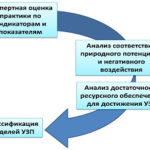UDC 502.35;504.052
Kust G.S., Durikov M.H., Lobkovskiy V.A., Andreeva O.V., Nepesov M.D., Mamedov B.K., Nikolaev N.V. SCIENTIFIC BASIS FOR SETTING LAND DEGRADATION NEUTRALITY TARGETS IN TURKMENISTAN // Arid Ecosystems. 2022. Vol. 28. № 4 (93). P. 115-131. | PDF
Setting National targets for achieving Land Degradation Neutrality (LDN) and establishing monitoring systems for indicators is an important strategic objective in combating desertification and preventing land degradation in Turkmenistan, arising from the implementation of the UN Sustainable Development Goal 15.3 2030. The paper demonstrates the possibility of integrating of the LDN global indicators in the National Land Cover Monitoring System, which is currently under development, and provided with statistical and geoinformation data for the entire territory of the country. The paper shows how approaches can be developed to integrate the system of LDN indicators into the National Land Surface Monitoring System of Turkmenistan, which is currently under development, with the provision of statistical and geoinformation data for the entire country. Despite important new data obtained using global approaches, a reliable LDN monitoring basing on national data is currently not fully feasible, due to the fact that the global indicators are not sufficiently supported by available national data and do not correspond to global proxy indicators of dynamics land cover, land productivity and soil organic carbon. It is recommended to use cartographic and stock data collected and processed in the late 1980s-90s of the 20th century as a «baseline» for monitoring land degradation, as well as assessment data of the statement of protected areas. Additional and alternative LDN indicators of particular importance for Turkmenistan are proposed: salinization of soil and land, soil deflation, climate aridity, dust storms.
Keywords: Land Degradation Neutrality, Turkmenistan, land degradation, indicators, monitoring.
Financing. The article was prepared within the framework of the project of the GIZ Regional Program «Integrated Land Use taking into account climate change in Central Asia» (ILUCA) – collection of material and preliminary conclusions; topics of the State Assignment of the Institute of Geography of the Russian Academy of Sciences No. FMWS-2022-0001 «Spatial and temporal problems of sustainable land use in the context of global climate change» (spatial data processing and formulation the main provisions and conclusions).
DOI: 10.24412/1993-3916-2022-4-115-131
EDN: LVMDUZ







